How Common is AGA
Commonest Causes of Hair Loss in Men and Women
Hair loss can result from many factors. Some of these include thyroid disorders, high fever, diet, childbirth, and certain medications. The most common form of scalp hair loss is termed Male Pattern Baldness ( MPB ) or Androgenetic Alopecia ( AGA ). This type of hairloss is NOT caused by poor circulation, clogged hair follicles, frequent shampooing, or the use of hats or helmets. 95% of hair loss in men and 65% in women are from AGA. There is no actual hair shedding. The characteristic feature is hair miniaturization in patterned areas
Patterned Hair Loss
AGA has 2 common patterns: Receding hairline and thinning crown. AGA is determined by a combination of hereditary factors and male hormones called androgens which include testosterone and dihydrotestosterone ( DHT ). The tendency for male and female pattern hair loss is genetically inherited from either side of the family and begins to develop after puberty. Hair on the scalp that is genetically affected by DHT (generally the front and top of the scalp), starts to shrink until it is lost. Whereas hair at the back and sides of the scalp is permanent because it is not affected by DHT.
5 Important Points about AGA
• AGA causes 95% of all hair loss in men, followed by Alopecia Areata (1-2%)
• AGA progresses with age
• AGA is unpredictable
• You may be the first one with AGA in family
• There is no actual loss of hair follicles
Incidences of AGA in Men
• 19.9% of Chinese have AGA
• About age 21, 25% of men with AGA first notice hair loss
• About 25% by age 25-30 will have AGA
• About 40% by age 40 will have AGA
• About 50% by age 50 will have AGA
Clinical Presentation
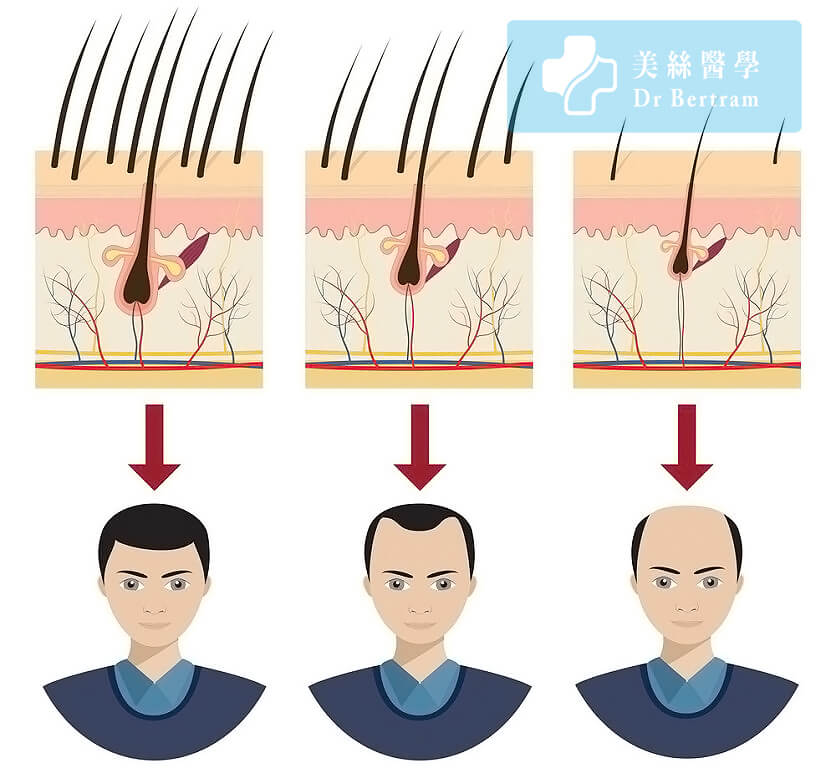
AGA is determined by a combination of hereditary factors and male hormones called androgens which include testosterone and dihydrotestosterone ( DHT ). The tendency for male and female pattern hair loss is genetically inherited from either side of the family and begins to develop after puberty. Hair on the scalp that is genetically affected by DHT (generally the front and top of the scalp), starts to shrink until it is lost. Whereas hair at the back and sides of the scalp is permanent because it is not affected by DHT.
Pathology
The primary pathology is progressive miniaturization of scalp hair transforming to fine vellus hairs. Androgens, specifically dihydrotestosterone ( DHT ), cause miniaturization in men. Patients with AGA are inherited with hair follicles more sensitive to DHT.
Miniaturization is a complex multifactorial process driven by both genetic and non-genetic factors. Not every follicle is affected at the same time or to the same extent. Miniaturization can take place within a few years for some, or decades for others.
Signs and symptoms
Increase the number of the miniaturized follicles causes baldness. Hair follicles in hairline, midscalp, crown, and temples are most sensitive to DHT. In men the first appearance is therefore a receding hairline and/or thinning crown. Thinning eventually progresses into other areas.
In the more advanced AGA only a rim or "horseshoe" pattern of hair remains. In some men even this remaining rim of hair can be affected by DHT.
Physical Examination
Presence of miniaturized hair follicles smaller than 0.02mm is an early marker of AGA even when a normal number of thick hair is still present. In advance AGA the Terminal/vellus hair ratio change from the normal 8 : 1 to 4 : 1. The total number of hairs remains the same in 90% of cases.
Psychological Impacts of AGA
AGA can adversely affect the social interaction and employment opportunity.
AGA and Coronary Heart Disease
Thinning in the crown, not receding hairline, is associated with risk of heart attack, especially if onset of hair loss before age 30 and with a rapid progression. Frequent check of blood lipid profile is recommended.
• Mild to moderate AGA: risk increases by 1.3 X
• Severe AGA: risk increases by 3.4 X
Hair Miniaturization
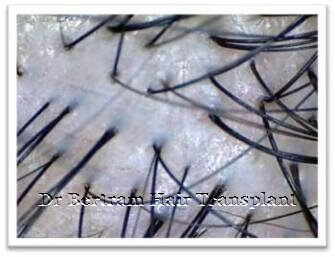
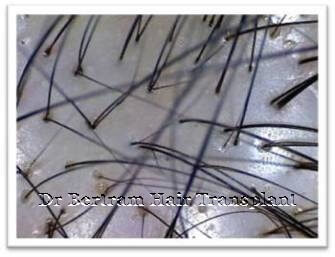
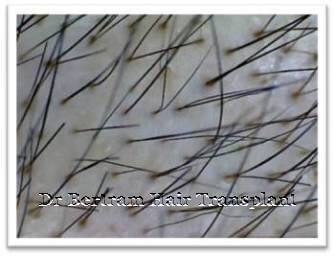
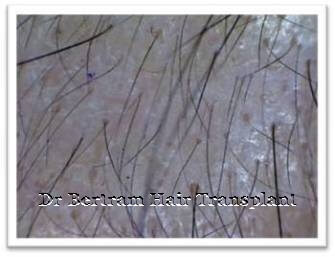

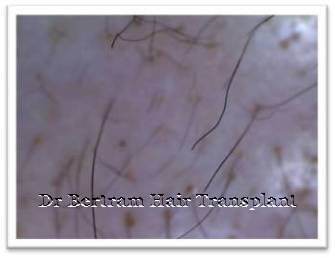
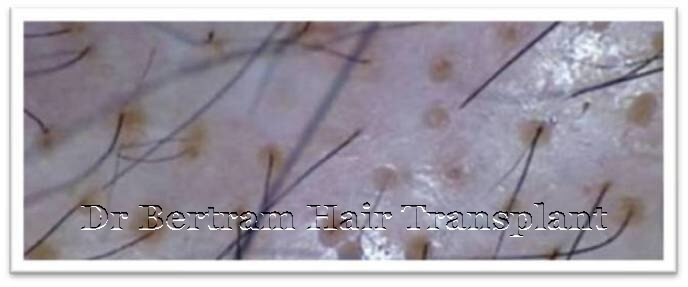
• The presence of "mini-hair" is diagnotic of androgenetic alopecia
• Miniaturization is from DHT acting upon androgen-sensitive hair follicles
• The diameter of the hair shaft is diminished with time
• Our human eyes can only see hair larger than 0.02mm in diameter
• Actual number and density of all hairs (including mini-hairs) remain unchanged
• Truely speaking there is no actual loss of hair
• Under magnification one can still see all the hair follicle openings
• Hair loss treatment reverses miniaturization rather than grows
new hair
5 Alpha-Reductase & DHT
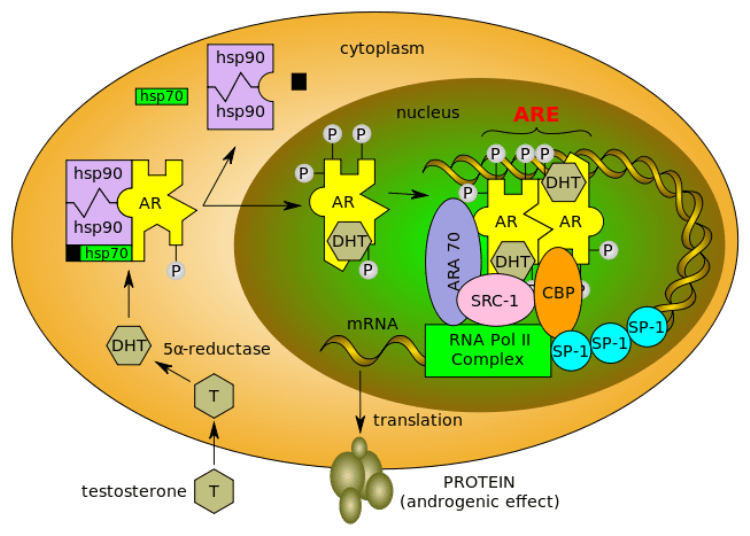
(Picture Above) Binding DHT with Androgen Receptor in the hair follicle induces Miniaturization. (source)
Androgen Receptors (AR)
AR protein mediates the action of androgens (male hormones) including testosterone (T) and DHT. Once activated by an androgen it translocate into the nucleus of a cell, where it acts as a transcription factor responsible for the transcription of other genes.
Androgen Receptor Genes
These are the DNA regulator of AR and are targeted by the HairDx Genetic Test. The genes are found in:
• X-chromosome - the major susceptible gene for AGA
• Several other genes e.g. the short arm of chromosome 20
Diydrotestosterone ( DHT )
DHT is a by-product of testosterone converted by Type II 5 α reductase. Although all androgens can cause miniaturization in men, DHT has highest affinity for the hair follicle Androgen Receptors. Skin and follicles in balding scalp contain more DHT than non-balding scalp. Prolonged DHT exposure leads to miniaturization.
DHT also causes acne, facial hair, and enlargement of the prostate(BPH). Kaufman in 2002 showed that DHT have no known beneficial role after puberty and can be targeted specifically without significant concern.
5 Alpha Reductase
There are 2 types of 5 α Reductase: Type I & II. Type 1 is found in all body skin and scalp, while Type II is found in genital skin, prostate, and other genital tissues. Dr Inaba suggested that 5 α Reductase is contained within the sebaceous glands of hair follicles. Over-consumption of animal fat may stimulate the sebaceous gland and thus 5 α Reductase leading to early onset of AGA. Some part of the world population has no 5 α Reductase. Consequently they have no prostate or hair loss problem.
Message from the Doctor
Welcome to “Doctor's Talk,” where I’ll talk about everything related to hair loss and hair transplants. This series is here to help you understand more about how hair treatments work and what you can expect from them. The information provided is based on my 18 years of experience in dealing with hair loss.
Disclaimer -
Please note that this series is purely educational. Reading these posts does not guarantee my services, nor are they intended for business promotion. Information provided is not guaranteed to be up-to-date and should not be considered a substitute for professional medical advice.
Any opinions discussed may not be universally accepted or applicable to all individuals. Always consult a healthcare professional before making any decisions related to your health.

